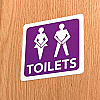Should kids have their cholesterol checked?

Why would a pediatrician draw blood from your 9-, 10-, or 11-year-old at his or her next annual wellness visit? Because the American Academy of Pediatrics (AAP) recently endorsed updated guidelines that call for checking LDL (bad) cholesterol levels in all kids between the ages of 9 and 11.
The cholesterol-test recommendation created quite a stir. But wait, there’s more. The guidelines also call for annual blood pressure checks beginning at age 3, and periodic blood sugar measurements starting between ages 9 to 11. There’s also a strong recommendation for kids and adolescents to limit sedentary screen time to two hours or less per day, and to get at least an hour a day of moderate physical activity.
The biological basis for these guidelines is that atherosclerosis (the fatty gunk in arteries that causes heart attacks, strokes, and other serious problems) starts during youth. In many cases, so do the high blood pressure, blood sugar, and LDL levels that feed atherosclerosis—right alongside the lifestyle habits such as poor diet and lack of exercise that boost the numbers. If unaddressed, atherosclerosis progresses inexorably.
The health care community’s reaction to the guidelines was generally positive, although some physicians expressed concern that LDL testing would lead to overmedicating kids as a quick fix for high cholesterol. But the guidelines stipulate that cholesterol-lowering medication should be considered only if a six-month trial of lifestyle changes fails to lower very high cholesterol (greater than 190 milligrams per deciliter of blood) in kids 10 or older. Experts estimate that only 1% of children and adolescents will meet those criteria. (See the table below for cholesterol level categories in kids.)
In a recent online discussion about the new guidelines, Drs. Sarah de Ferranti and Justin Zachariah, both of Harvard-affiliated Children’s Hospital Boston, noted that early cholesterol testing will help reveal the estimated 2 out of 10 kids who have high cholesterol, most of them because of a poor diet and lack of exercise. The doctors also say testing will identify the smaller number of children (1 in 300 to 500) who have very high LDL due to a genetic disorder called familial hypercholesterolemia. Familial hypercholesterolemia, Dr. de Ferranti notes, is far more common than many of the rare diseases for which newborn babies are routinely tested.
The guidelines are really about getting kids, their parents, and their doctors to talk about making healthy lifestyle choices—what to eat and drink and how much exercise and sleep to get, for example. When young people know where they stand with these cardiovascular risk factors, they get a head start on doing things to potentially avert life-threatening or chronic illnesses in middle age.
The hope is that more doctor time will be spent coaching and counseling now, rather than treating cardiovascular disease later.
LDL categories for children and adolescents
| Category | LDL (milligrams per deciliter) |
| Acceptable | <110 mg/dL |
| Borderline high | 110 to 129 mg/dL |
| High | >130 mg/dL |
Source: National Cholesterol Education Program
About the Author

Lloyd Resnick, Former Editor, Harvard Heart Letter
Disclaimer:
As a service to our readers, Harvard Health Publishing provides access to our library of archived content. Please note the date of last review or update on all articles.
No content on this site, regardless of date, should ever be used as a substitute for direct medical advice from your doctor or other qualified clinician.











.jpg)




